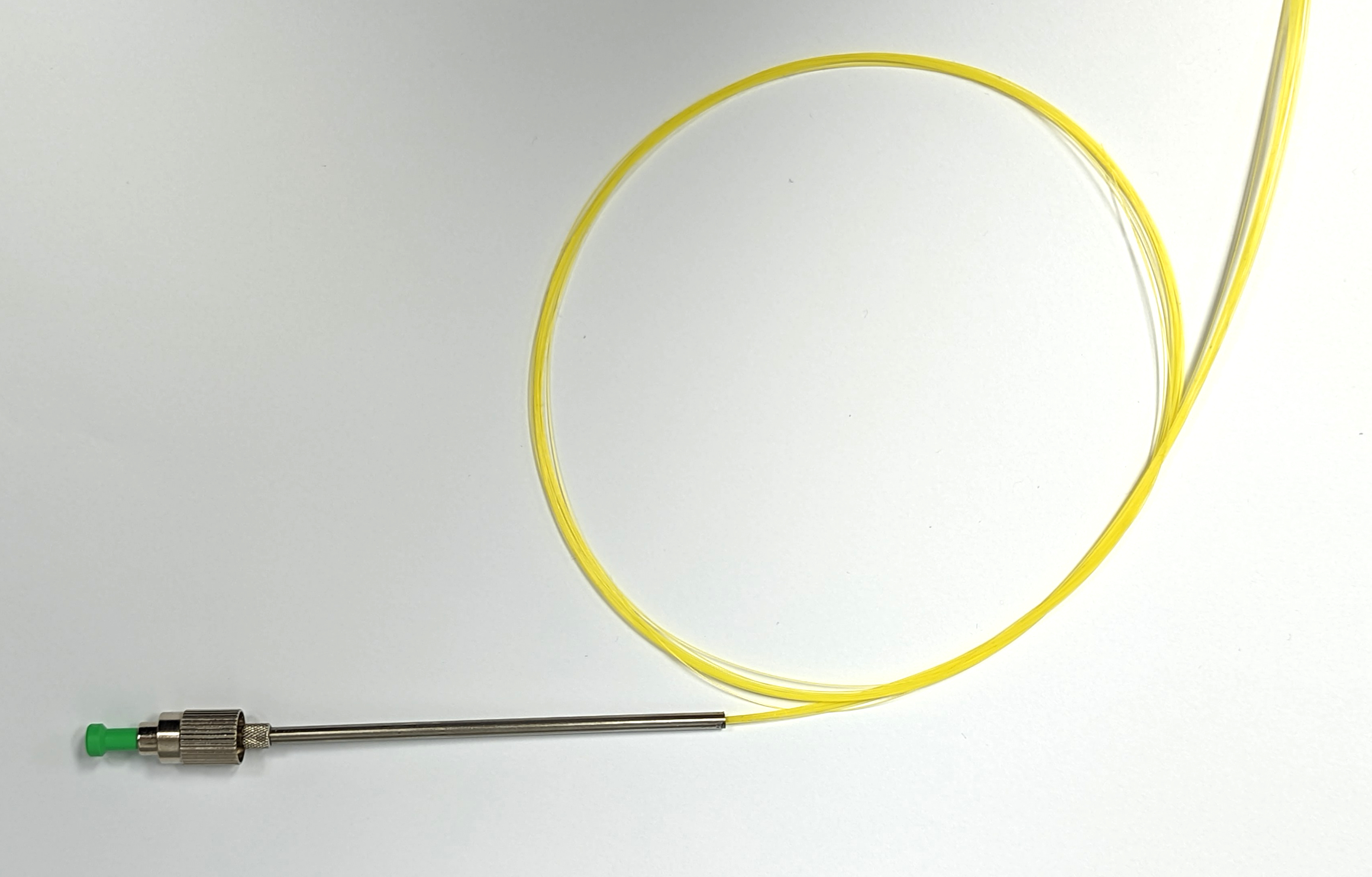Gathering Light: Miniaturized Lantern Shows Promise for Atmospheric Measurements

A photonic lantern developed by researchers at the University of Central Florida, NASA Langley, and the University of Sydney. This component will help improve lidar instruments, which use incident light to study Earth systems like surface windspeed. (Credit: Rodrigo Amezcua, University of Central Florida)
A new fiber optic instrument component may help researchers develop smaller telescopes, improved lidar instruments, and other advanced technologies for observing dynamic Earth systems.
Developed by researchers at the University of Central Florida (UCF), NASA’s Langley Research Center, and the University of Sydney (Australia), the component – a novel photonic lantern – is designed to channel incident light along bundles of optic cables towards a detector array, which would then analyze the light for information about atmospheric features like aerosols and trace gases.
By tracking aerosols as they move within Earth’s atmosphere, scientists can learn more about wind speed and weather patterns.
While photonic lanterns – tiny devices made of fiber optic cables about 3 centimeters long and 2 millimeters in diameter – already appear frequently in fiber communication experiments, they’re completely absent in satellites performing science missions.
Traditional photonic lanterns lose about 20% of incident light while channeling it to a detector. NASA’s new photonic lanterns, on the other hand, feature a unique refractive index that guides all but 4% of incident light to a detector.
“We are using fibers with very specific refractive index profiles to make these photonic lantern devices, and also we are using capillaries with specific geometries and a unique refractive index profile,” explained Rodrigo Amezcua Correa, Professor of Optics and Photonics at UCF’s College of Optics and Photonics (CREOL) and principle investigator for NASA’s photonic lantern project.
A refractive index describes how light bends as it travels through optical cables and the glass capillaries that connect those cables to instrument sensors. Carefully controlling that index is critical for ensuring incident light remains intact as it travels from an instrument’s aperture, such as a telescope lens, to its detectors.
With 98% efficiency, Correa’s photonic lanterns are the most efficient yet developed. This improvement could greatly enhance lidar instruments, which use collected incident light to study a wide variety of complex Earth systems, including aerosols and surface wind speed.
“We decided what we needed to do was create a photonic lantern to capture more light, and then split it into several single-mode signals, which allows for determination of Doppler phase shifts to derive phenomena like wind speeds. That’s where we started discussing the applications for lidar,” said Correa.
Correa’s custom fiber optic cables also serve as a kind of filter. Different cables transport different spectra of light, and large, multimode light signals containing numerous spectra of light break apart into smaller, single-mode signals as they pass through this new photonic lantern.
By transforming multimode signals into single-mode signals, Correa’s photonic lanterns reduce noise interference and could help make lidar more efficient.
“What we now have is a multimode photonic lantern that splits into a series of internal mode fibers, which means we capture a lot more light than traditionally captured with a conventional coherent lidar,” said Correa.
With three photonic lantern prototypes completed, Correa and his team plan to demonstrate their new technology in their UCF laboratory. Next, colleagues at NASA Langley will study the photonic lanterns operating within a full lidar system.
At UCF’s CREOL laboratory, Correa teaches undergraduate and graduate students how to craft the special fibers
needed for these new photonic lanterns.
“There is a lot of manual work going into making the devices. You need a lot of experience. So, we spend a lot of time learning how to actually make these devices. We are looking for ways to improve that process,” said Correa.
Once they validate their photonic lantern prototypes, Correa and his team will begin preparing their instrument component for ground and aircraft validation.
“The photonic lantern will be targeted to the specific instrument. It will depend on the wavelength of an operation, the type of lidar receiver that you’re working with, and other factors, but we can essentially create custom photonic lanterns for different instruments. This is a new, exciting capability,” said Correa.
Gage Taylor, NASA Earth Science Technology Office